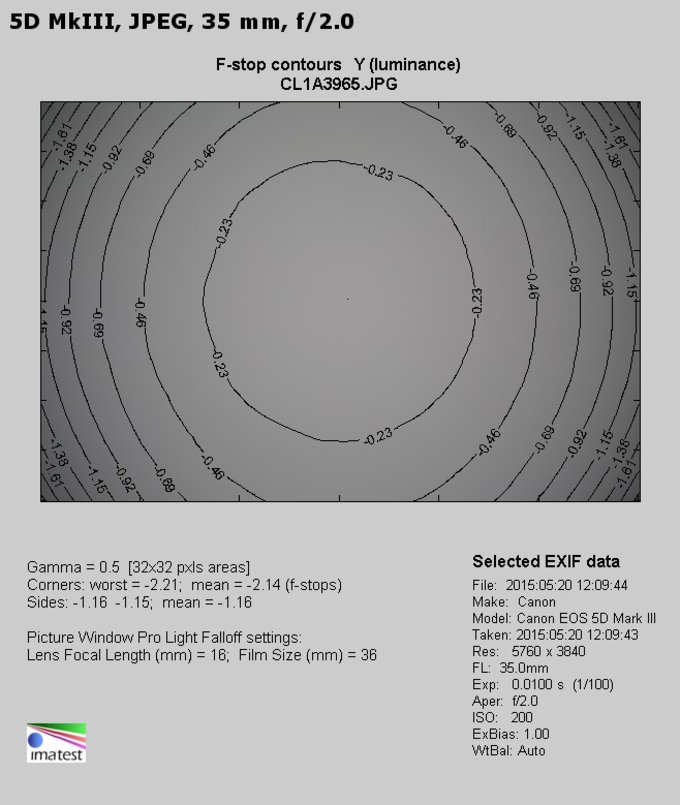Yongnuo YN 35 mm f/2.0
8. Vignetting
| Canon 50D, f/2.0 | Canon 50D, f/2.8 |

|

|
You get a chance to notice the vignetting only at the maximum relative aperture where it reaches 18% (−0.58 EV). Already by f/2.8 the problem disappears almost completely as the value measured by us amounted to just 7% (−0.21 EV).
Please Support UsIf you enjoy our reviews and articles, and you want us to continue our work please, support our website by donating through PayPal. The funds are going to be used for paying our editorial team, renting servers, and equipping our testing studio; only that way we will be able to continue providing you interesting content for free. |
- - - - - - - - - - - - - - - - - - - - - - - - - - - - - - - - - - - - - - - - - - - - - - - -
Now let’s see how the situation changes after passing to full frame.
| Canon 5D III, f/2.0 | Canon 5D III, f/2.8 |

|

|
| Canon 5D III, f/4.0 | Canon 5D III, f/5.6 |

|

|
Here the problems are already very serious. At the maximum relative aperture the brightness loss in the corners of the frame reaches as high as 52% (−2.14 EV). It is quite a lot but, after all, even the result of the more expensive and bigger Canon EF 35 mm f/2.0 USM IS was much worse - over 3 EV! By f/2.8 the vignetting decreases to 30% (−1.03 EV), and by f/4.0 it becomes slight, getting to just 18% (−0.58 EV). The aberration becomes almost imperceptible by f/5.6 and f/8.0 apertures, where it is respectively 12% (−0.37 EV) and 11% (−0.35 EV).
 |






